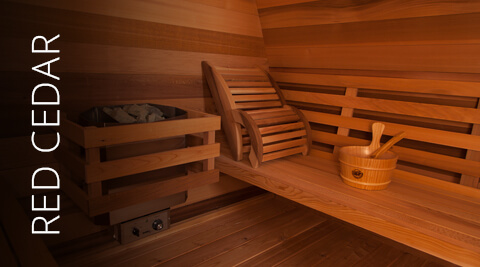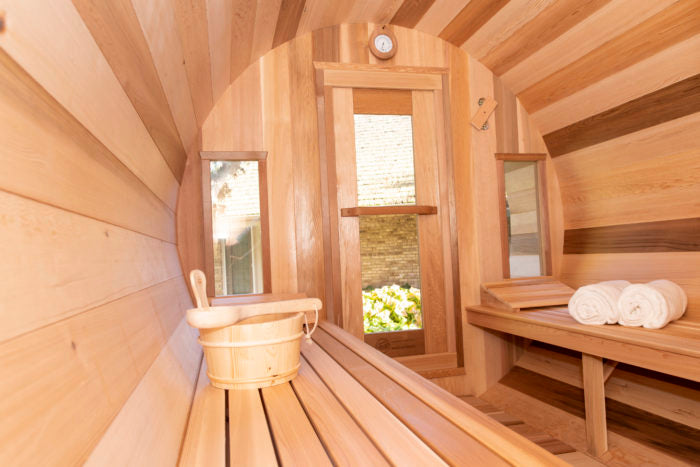Things about Traditional Sauna
Things about Traditional Sauna
Blog Article
How Traditional Sauna can Save You Time, Stress, and Money.
Table of ContentsThe smart Trick of Traditional Sauna That Nobody is DiscussingTraditional Sauna - An OverviewOur Traditional Sauna PDFsThe Facts About Traditional Sauna Uncovered5 Simple Techniques For Traditional Sauna
The majority of the weight shed in a sauna is water loss and is re-gained upon rehydrating. Without a question sauna can be an essential part of a healthy weight loss program. To take a look at the differences in between conventional and IR saunas, I will certainly separate these right into proven, theoretical, and made distinctions.Thus, the best point in the saunawhich goes to the ceiling directly over the sauna heateris typically in between 185 and 190 F. Claims that a standard sauna exceeds 200 F is just not true and not relevant for electric saunas marketed in the US. The temperature level for a far-infrared sauna is usually established between 120 and 140 F; however, unlike the standard sauna, the goal in and IR room is not to attain a high temperature level.
Due to this, the temperature difference is almost irrelevant, since excessive sweating results in both sauna types, yet the technique of heating up the body is various. In an IR sauna the bather will really feel hot and will certainly sweat profusely, but at much lower temperature levels (Traditional Sauna). Hence, if the goal is to invest longer time periods in the sauna, the IR sauna is an excellent selection
When a standard sauna has been appropriately heated, the sauna walls are warm, the air temperature has actually attained established temperature and the rocks are very warmed. As a fascinating side note, the warmed wall surfaces and the rocks are sending out far-infrared warm, combined with the warmed air, to produce an "wrapping up warm".
Traditional Sauna for Beginners

When the high temperature level is accomplished, the elements cycle on and off to preserve the high temperature. Most typical sauna customers enjoy pouring water over the rocks to develop heavy steam to increase sauna humidity levels. The advantages of pouring water over the rocks include: making the room a lot more comfy, moistening the nasal passages, and allowing the usage of aromatherapy by mixing important oils with the water.

When the energy goes into Recommended Site the body, it triggers the body temperature level to raise and eventually leads to sweating. In an infrared sauna it is necessary for the emitters/heaters to continue to be get redirected here on nearly constantly. Because there is no mass of rocks to retain heat, the sauna will certainly cool if the emitters turned off.
As mentioned over, the sauna bather in an infrared room desires to place himself before operating emitters to get optimal gain from the warm. The heating time for both areas can be extremely different, relying on exactly how the spaces are used. For a traditional sauna, a bather ought to permit 30-40 minutes for the room to achieve a desired temperature and to appropriately pre-heat the rocks.
An Unbiased View of Traditional Sauna
A well created sauna will generally accomplish a temperature of 150-160 F in regarding 30-40 minutes. For hotter temperature levels, the area may require to heat for a longer period.

Standard saunas tend to be larger (therefore make use of even more electricity) than infrared saunas, although conventional saunas are definitely available in one and 2 person sizes also. For a two-person typical sauna, 5x6 or 5x7 dimension is most prominent. The leading bench can easily seat two or three individuals and is additionally enough time to relax during the sauna session.
The smart Trick of Traditional Sauna That Nobody is Talking About
The average cost per kWH of electricity in the U.S. is roughly $0.11, so a 4.5 kW heating system will certainly set you back approximately $.50 to compete one hour, if the heating system runs continuously for one hour. Usually a sauna heating system will run for 75% of the initial hour and 50% of subsequent hours on given that the aspects cycle once the established temperature level is attained.

There is a seldom reviewed distinction in the social experience in between the 2 areas. While our culture has shed some of the social advantage of the typical sauna experience, it can be really socially gratifying (Traditional Sauna). From family members time in the sauna, to heart-felt discussions with loved ones, to sauna partiesthe standard sauna experience can cause intimate mingling
See This Report on Traditional Sauna
Many greater end infrared spaces consist of colored light therapy, audio systems and full-glass fronts.
Report this page